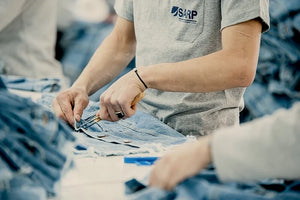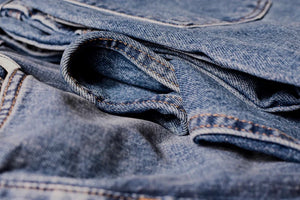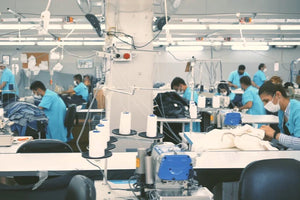TORLAND vs. status quo in the fashion industry
Aug 23, 2024
The fashion industry, especially jeans production, faces significant environmental and social problems: from toxic chemicals and high water consumption to exploitation and global textile waste. At TORLAND, we have set ourselves the goal of making jeans production more sustainable and fairer.
TORLAND: The sustainable alternative
Our approach encompasses every stage of the value chain: from organic cotton cultivation without harmful chemicals to fair working conditions and environmentally friendly technologies in production. This is how we create fashion that is kind to both the environment and people.
Sustainable cotton cultivation
Conventional cotton cultivation is one of the main causes of soil erosion and environmental pollution. Pesticides, chemical defoliants and high water consumption are standard here. We, on the other hand, rely on organic cultivation, mostly in mixed crops or crop rotation, which maintains soil quality and reduces pests in a natural way. Avoiding harmful chemicals and using natural fertilizers protects the soil and groundwater.
Clean fabric production
While traditional jeans production often uses toxic or carcinogenic dyes, we completely avoid such substances. The use of 100% cotton and the economical use of mixed fibers where they are really necessary also contribute to sustainability. This also prevents microplastics from entering the sea - a serious problem with conventional mixed fabrics.
Fair working conditions
The textile workers who form the basis of the fashion industry often suffer from extreme working conditions. Fairness is our top priority: legal maximum working hours, minimum wages and social security are a matter of course for us. We also guarantee working conditions without health risks.
Innovative Jeans Production
When producing the popular used look, we rely on advanced technologies such as laser and e-Flow, which reduce water consumption by up to 70%. The use of enzymes instead of chemicals also shows that environmental protection and fashionable aesthetics can go hand in hand. Our jeans also only need to be washed once, which further minimizes water consumption.
Strict controls
In contrast to many conventional manufacturers, who often do not carry out independent controls, we undergo regular audits by independent bodies. These check compliance with ecological and social standards along the entire value chain. We also carry out regular laboratory tests to guarantee product quality and the absence of chemical residues.
Sustainable Transport and Packaging
Plastic packaging is a thing of the past for us. Instead, we use ecological paper shipping bags and completely avoid plastic, which significantly reduces the environmental impact of transport and packaging.
Sustainable Trade and Consumption
Another problem in the fashion industry is overproduction due to seasonal trends. We avoid these cycles and instead focus on long-lasting products. We do not destroy leftover stocks, but give them a second life cycle, either through repair or recycling.
Environmentally friendly disposal
While the majority of global textiles end up in landfills in Africa or South America sooner or later, we take a different approach. We collect old jeans and turn them into new products or recycle them. Our goal is to raise consumer awareness of the problem of textile waste and create incentives for recycling.
Conclusion: Our vision of a better fashion world
At TORLAND, we show that it is possible to make fashion more sustainable and fairer without having to compromise on style and quality. Through environmentally friendly production processes, fair working conditions and innovative technologies, we are setting new standards in jeans production. Together, we are making it clear that there are alternatives in the fashion industry that benefit both the environment and people. This is our step in the right direction - towards a future in which fashion is not produced at the expense of the environment and people.
You can find a detailed comparison in our fact sheet.






